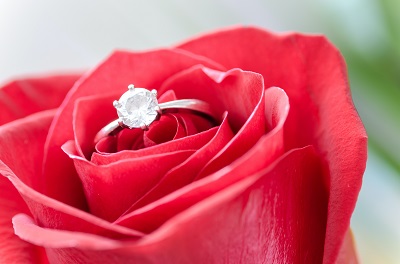When to Buy an Engagement Setting Only: Your Definitive Guide
By Catalogs Editorial Staff
You can buy an engagement setting only and wait on the stone. Before you know when to buy an engagement setting only, you have to understand what this means. Yes, you know what an engagement ring is and that there is a stone or stones and a band and different colors, shapes, and styles.
But what is a setting? The jewelry industry’s word for setting is “mounting.” This means before the piece has been set with a stone.
Reasons to Buy the Setting Only
Apart from when to buy an engagement setting only, there are a number of reasons to buy the setting alone. Knowing, of course, that the jewelry will not be complete until you add the diamond, gemstones, or combination of stones. First, you may already own a diamond. This diamond can be a loose stone that may have been removed from another piece of jewelry. Perhaps, a single earring that is missing its mate. Or, it could be one that is a family heirloom and has been handed down “loose.”
Another reason to buy only the setting is that you have another diamond ring, perhaps one that is out-of-fashion, from which you intend on using the stone. You may also be waiting to purchase the stone at a later date. When you can shop together or when you can afford a larger or better quality stone.
Remember, when you purchase only the setting, you will have to pay a jeweler to “set” your diamond, and usually you will want his/her advice on the style and size of setting that best matches the stone you already have. Remember that you can opt to add gemstones and smaller or complimentary diamonds to the setting in order to showcase the diamond you are planning around.
Here are some diamond setting basics:
Prong
When you look at engagement ring mountings you will most commonly see a prong, which involves three to six claws holding the stone tightly in a metalhead or basket. Prongs can be rounded, pointed, V-shaped or flat and serve as pockets for a square stone’s corners.
Which should you pick? Six prongs? Four prongs? If you go with the latter (four) more diamond is seen. However, six prongs provide more security but can overcome a small stone.
Those choosing marquise-, heart- or pear-shaped stones should determine that the points are supported in a V-shape prong, which provides protection. For emerald-cut stones, select a flat prong.

Keep in mind high-set prongs can actually scratch a person, snag clothes and get tangled up in hair. Also know that prongs don?t offer as much protection as other styles because more of the stone?s girdle (which is the perimeter) is exposed.
Tension
When there is little interference by the shank (which provides the compression-spring pressure or tension holding the stone in place) the stone looks like it?s floating. However, only very hard stones such as sapphires, diamonds and rubies can tolerate the required pressure.
Popular Savings Offers
The good thing about a floating stone is light gets into the stone. On the other hand, because the stone is floating, it has less metal, meaning there is less protection, and might not be a good choice for someone who is very active.











